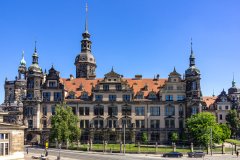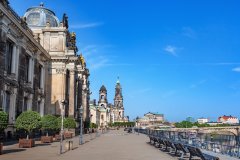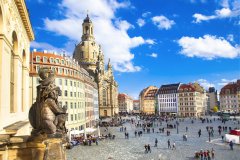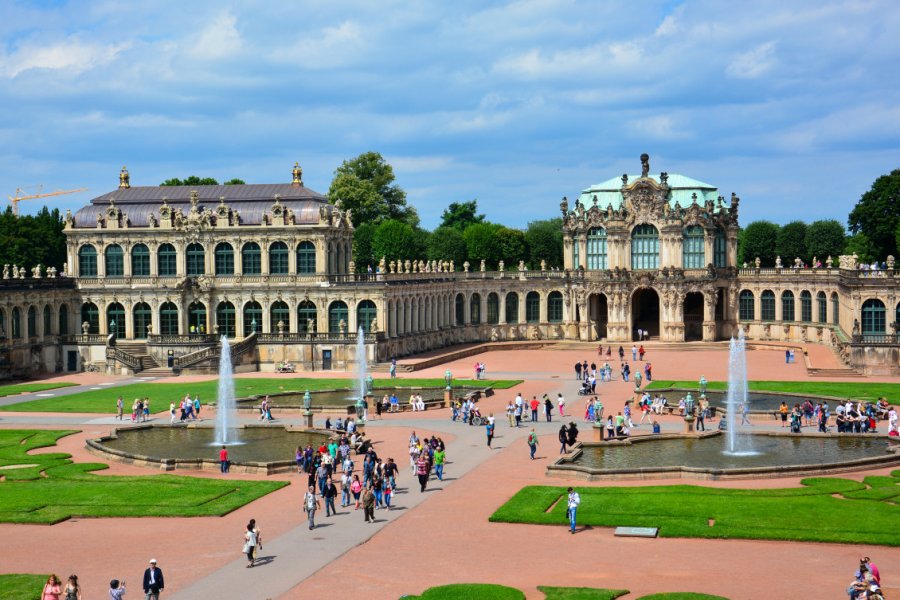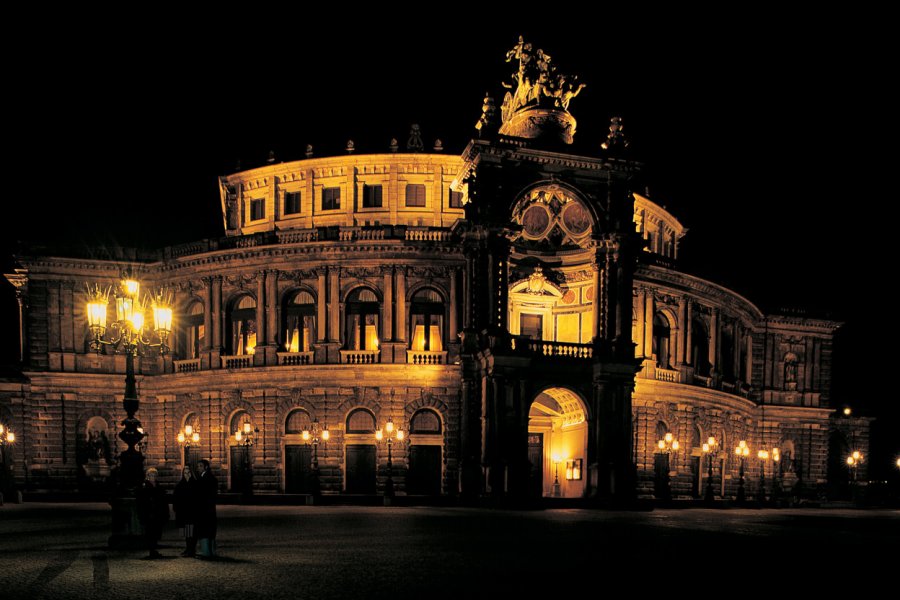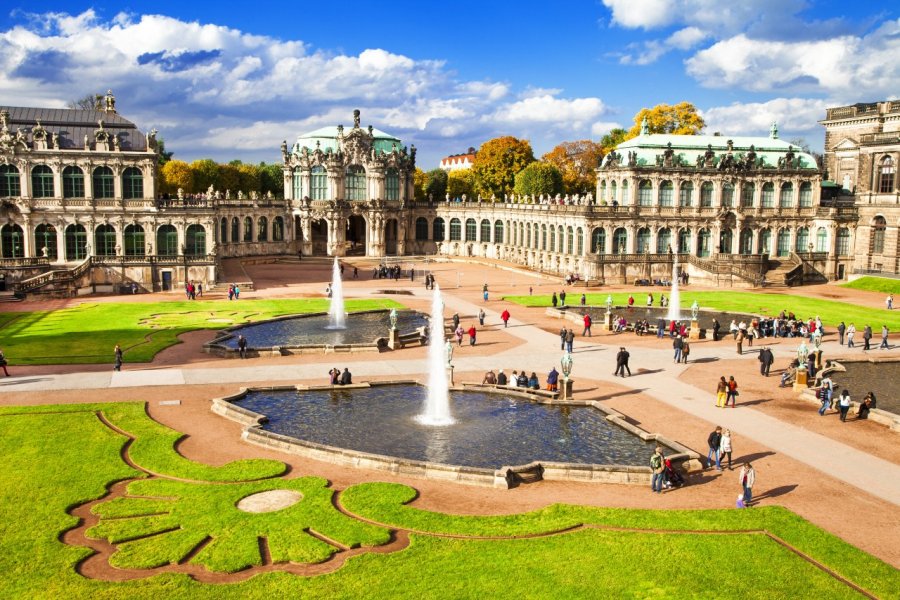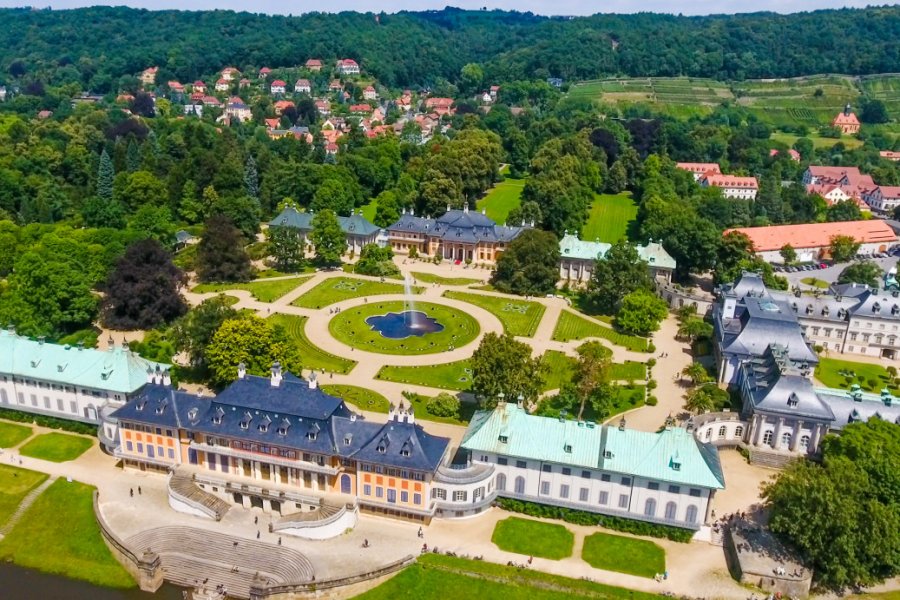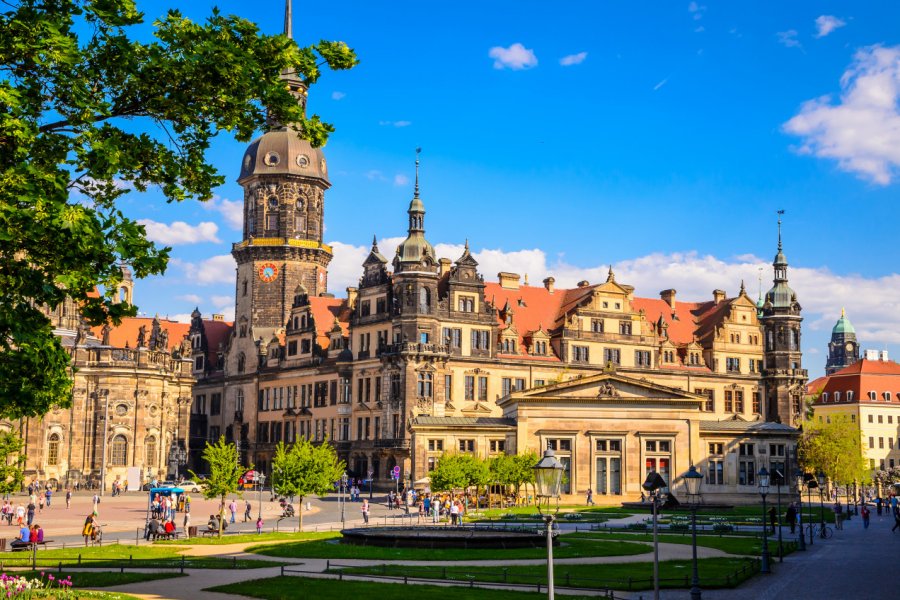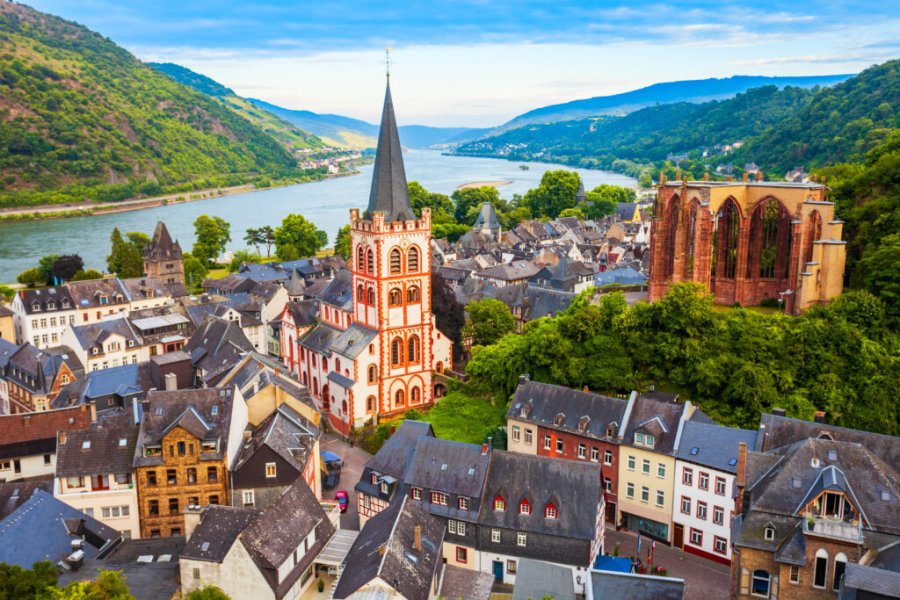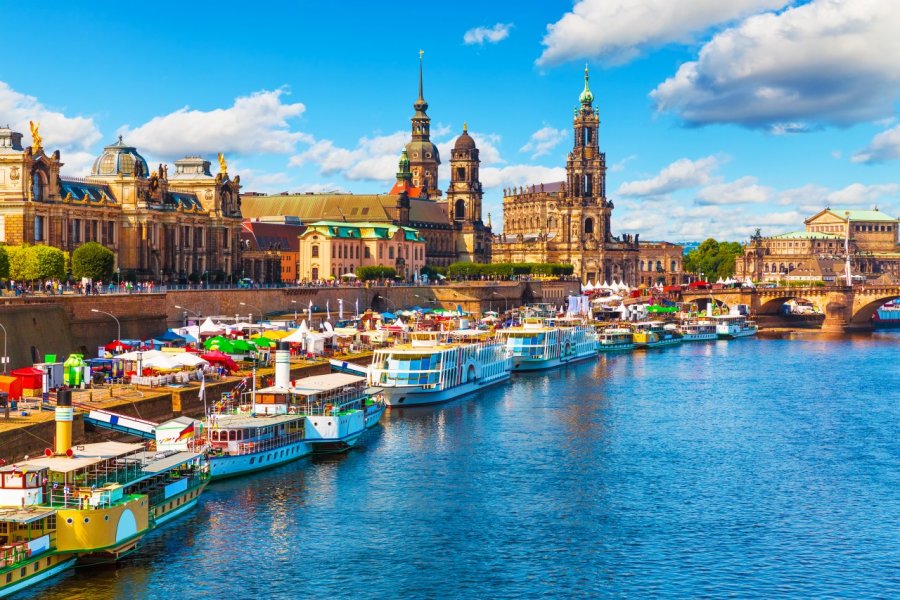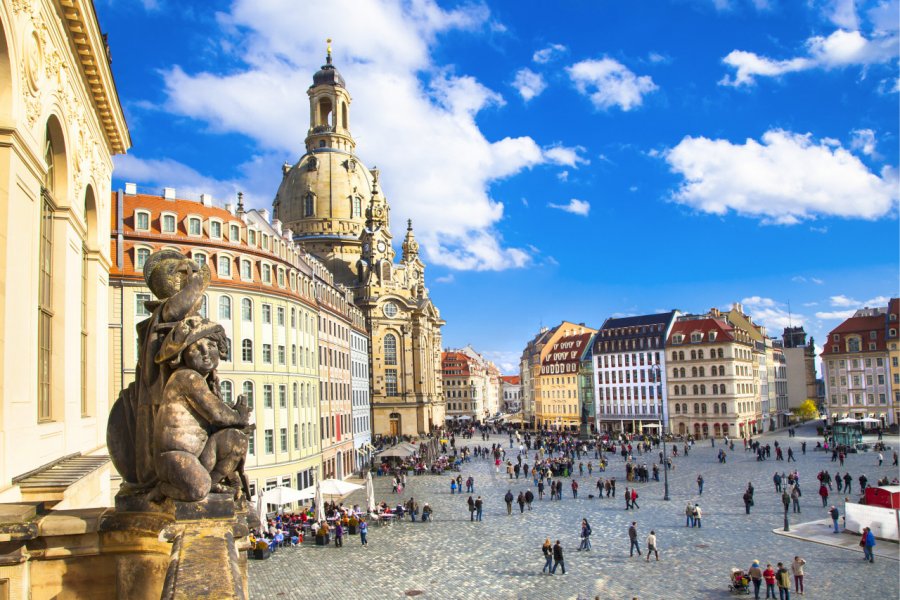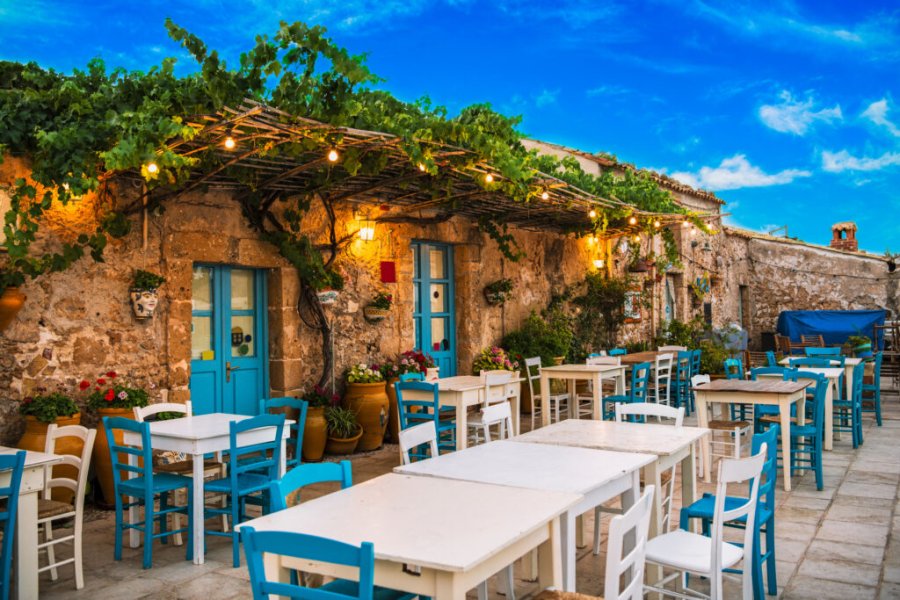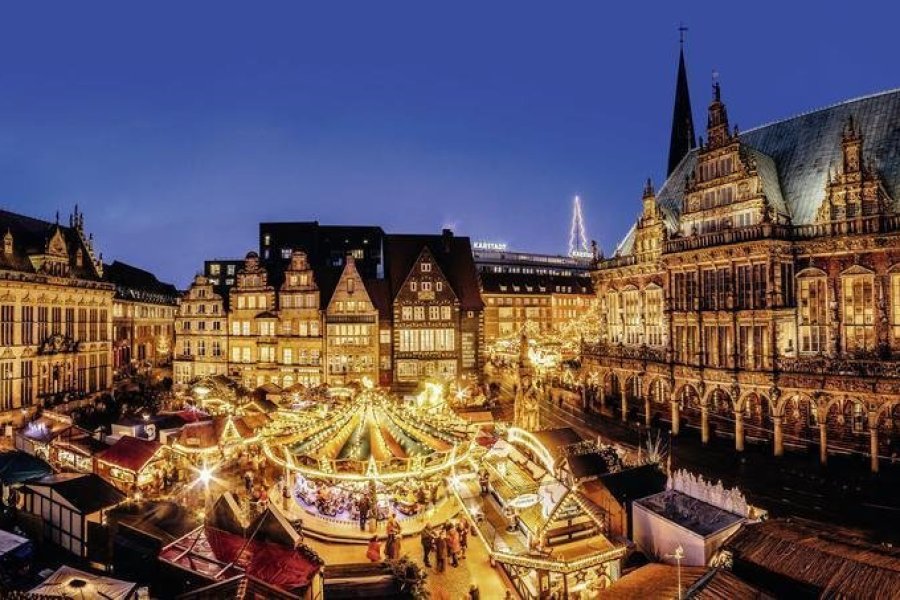Travel Guide Dresden
Dresden, Saxony's Baroque marvel, is a destination that dazzles with its enduring charm and captivating history. In the heart of Germany, this city is situated on the banks of the River Elbe, surrounded by wooded hills. Its origins date back to the dukes, then prince-electors, of Saxony, who made it their residence from 1485 onwards. In the 18th century, under the reign ofAugustus the Strong, the town underwent a spectacular transformation, becoming a flamboyant Baroque city. It was at this time that the town was dubbed the Florence of the Elbe. The city also boasts a rich cultural history. It was a hotbed of the Enlightenment, attracting artists, writers and philosophers. Later, in the 19th century, Dresden became a center of German Romanticism. And in the early 20th century, it played a key role in the German Expressionist movement, with the Die Brücke (The Bridge) group.
However, Dresden's history has had its dark moments. During the Second World War, the city was almost entirely destroyed in the 1945 bombing raids. Almost 18 million cubic meters of rubble were left on a surface area of 15 km², and around 35,000 people lost their lives. But Dresden rose from the ashes, and today the Old Town has been painstakingly rebuilt to its former glory. Here's an overview of Dresden's main attractions in the Dresden Tourist Guide. Here you'll find the finest accommodation, surprising restaurants and must-see sights.
Indeed, the city is a mix of contrasts. The Altstadt, the Old Town, is a jewel of Baroque architecture, while the Neustadt, the New Town, is a dynamic, avant-garde district with alternative influences. The Old Town, restored after the bombings, is a UNESCO World Heritage Site. It is an outstanding example of German architecture, with cobbled streets and colorful facades. It is home to the Frauenkirche, an iconic Lutheran church, and the Zwinger, the rococo palace of the Hofkirche court, an impressive example ofBaroque architecture.
Dresden has managed to preserve its rich past, not least through its exceptional museums, including the Gemäldegalerie Alte Meister, which displays masterpieces of European painting, including works by Raphael, Rembrandt and Titian. Classical music is an essential part of Dresden's identity, thanks in particular to the creation of the Saxon State Opera, the Semperoper, a living testimony to the city's artistic scene.
The Elbe, which flows through the city, offers picturesque walks along its banks. You can also take a cruise on the Elbe to admire the monuments from the water. Discover Saxon history at Dresden's Green Museum, home to treasures from medieval times. The Castle of the Royal Residence of Dresden is a historic site that bears witness to the city's rich past. And don't miss the Japanese Palace, a unique example of oriental influence in Germany.
Dresden is also surrounded by natural beauty, notably Saxon Switzerland, a mountainous region offering hiking and climbing opportunities. A cultural destination that captivates lovers of history, art, nature and architecture, come and discover it!
What to visit Dresden?
Suggested addresses Dresden
When to go to Dresden?
Dresden is a pleasant destination all year round, but the best months to visit are April to October:
in spring, the city comes alive with gardens in bloom, while summer offers warm, sunny weather, ideal for exploring its architectural wonders. This is the period of the Dresden Easter Festival, a traditional celebration with craft markets and concerts;
summer, from June to August, is Dresden's peak festival season, with open-air concerts, street performances and cultural events;
in September and October, temperatures remain mild, and you can enjoy Dresden's autumnal beauty. Take part in the Dresden Classical Music Festival; it's also harvest season in the surrounding vineyards;
december and February offer a festive atmosphere with Christmas markets, while January is the quietest month to visit the city.
If you want to avoid the crowds and get lower fares, consider traveling outside the peak tourist season, particularly in November or March.
Weather at the moment
Dresden enjoys a temperate continental climate, with distinct seasons. Temperatures vary considerably from season to season:
The summer months, from June to August, are the hottest, with daytime temperatures approaching 25 to 30°C. This is the peak tourist season, with many outdoor activities and gardens in bloom;
Autumn, from September to November, is a pleasant time to visit Dresden, with mild temperatures between 15 and 20°C;
Winter, from December to February, is the coldest season, with temperatures often below freezing. Snow is frequent, creating a charming winter atmosphere. December and January are particularly popular for their traditional Christmas markets;
Spring, from March to May, is a period of transition, with rising temperatures, fluctuating between 10 and 15°C;
Dresden's weather is strongly influenced by the seasons, making the city attractive all year round.
Here are some guidelines to help you plan a budget for your stay in Dresden:
The currency used in Germany is the euro (EUR). Dresden is well equipped with ATMs, so be sure to bring credit cards and cash for your expenses;
You'll find youth hostels and guesthouses from EUR 30-50 per night, budget hotels from EUR 60-100, and superior hotels from EUR 100 per night;
German cuisine is delicious, and meals in local restaurants will cost you around 10-20 EUR for a main course. Cafés and bakeries offer light meals for around 5-10 EUR ;
A one-way ticket for public transport costs around 2.40 EUR. Cabs are also available, with a basic fare of around 3.50 EUR and a surcharge per kilometer;
Museums and historic sites have entrance fees ranging from 5 to 12 EUR. You can also save money by buying tourist passes if you plan to visit several sites;
Gratuities are not included in the bill, but it's customary to leave a tip of around 5-10% in restaurants. For cab drivers, round up the fare or leave an extra tip.
Here's what you need to know about the administrative formalities required to travel to Dresden:
For EU citizens, a valid passport is generally sufficient for a tourist stay in Dresden;
EU citizens do not need a visa for a tourist stay in Dresden lasting less than 90 days. However, if you are planning a longer stay or a specific purpose, please check the appropriate visa requirements;
No special vaccinations are required for travel to Dresden. It is, however, advisable to be up to date on your basic vaccinations;
It's always advisable to take out travel insurance covering medical care and emergencies, in case you need it during your stay.
If you plan to stay in Dresden for more than 90 days, you may need to apply for a residence permit. Contact theGerman embassy in your country for more information.
Check the latest information on administrative formalities before you leave, as rules may change.
Here's some important information to ensure a safe and healthy trip to Dresden:
No specificvaccinations are required to enter Dresden. However, make sure your routine vaccinations are up to date. This may include vaccinations against measles, flu and others, depending on the recommendations of your home country.
Before you leave for Dresden, check whether your health insurance covers you abroad;
Travel insurance is recommended ;
Tap water in Dresden is of excellent quality and perfectly drinkable;
Dresden has first-class medical facilities.
In the event of health problems, there are hospitals, clinics and pharmacies nearby to help you.
Practical information
- When to travel?
- Weather forecast
- Budget
- Formalities
- Health
- How to travel by yourself?
- How to get organized?
- Getting around
Media
How to go to Dresden? Our advice & tips
To go on a package tour to Dresden, you have several options:
Visit a local travel agency or go online to explore the different offers available;
Join organized tour groups visiting Dresden;
Search for travel groups on social networks, travel forums or specialized websites;
Many companies offer all-inclusive packages for Dresden. They usually include accommodation, meals, guided tours and sometimes even air tickets;
Another option is to take part in local guided tours once in Dresden;
Some cultural and educational associations organize educational trips to Dresden.
And don't forget to check the details of organized trips, including costs, itineraries, activities included and exclusions!
Discover our selection of travel agencies for this destinationHere is some essential information to help you organize your solo trip to Dresden:
Start by booking your flight to Dresden International Airport (Dresden Airport) or Berlin International Airport (if you prefer), then take a train or bus to Dresden;
Dresden offers affordable youth hostels, luxury hotels, or apartments and B&Bs for a more local experience;
The city has a good public transport network , and you can buy daily or weekly tickets to make getting around easier. A Dresden City Card offers discounts on transport and attractions.
Enjoy cultural visits to the Frauenkirche, the Zwinger Palace and the Albertinum art galleries. Check opening times and entrance fees;
Explore local restaurants for traditional dishes;
The official language is German, but many locals speak English, especially in tourist areas;
A printed travel guide or mobile app is useful for exploring the city on your own;
Be open to meeting locals to learn more about Dresden's culture and history!
Here's how to get around Dresden:
The streetcar is a very popular means of transport in Dresden;
The Dresden bus network complements the tramway; bus tickets are the same as tramway tickets;
Dresden has an excellent regional train network (S-Bahn);
Dresden is a bicycle-friendly city, with numerous cycle paths. You can rent a bike from one of the many rental stores or use the bike-sharing services;
You don't need a car to explore downtown Dresden, but you do if you're planning excursions into the Saxon countryside;
Dresden is easy to explore on foot;
Easily recognized by their yellow color and illuminated signs, cabs are more expensive than public transport.
If you want to enjoy the view from the Elbe, you can take a boat.
Don't forget to check public transport timetables and fares to optimize your exploration of this beautiful Saxon city.
